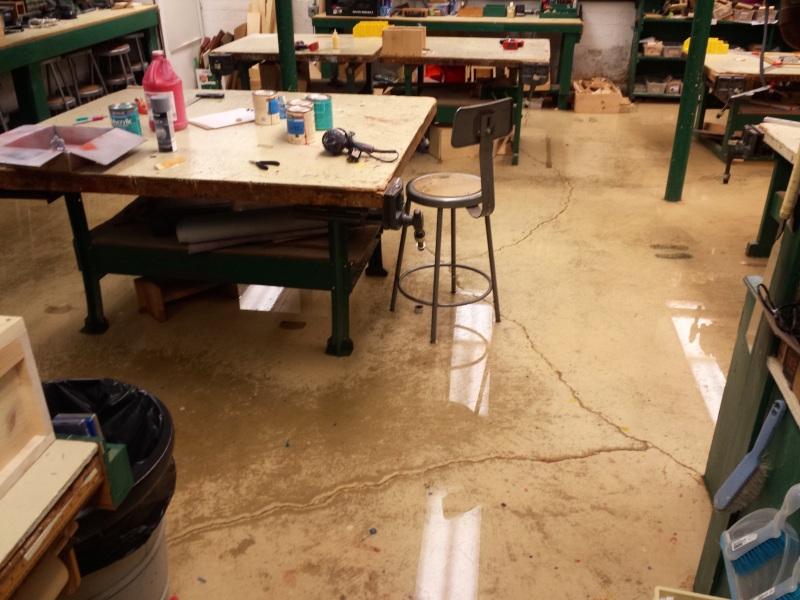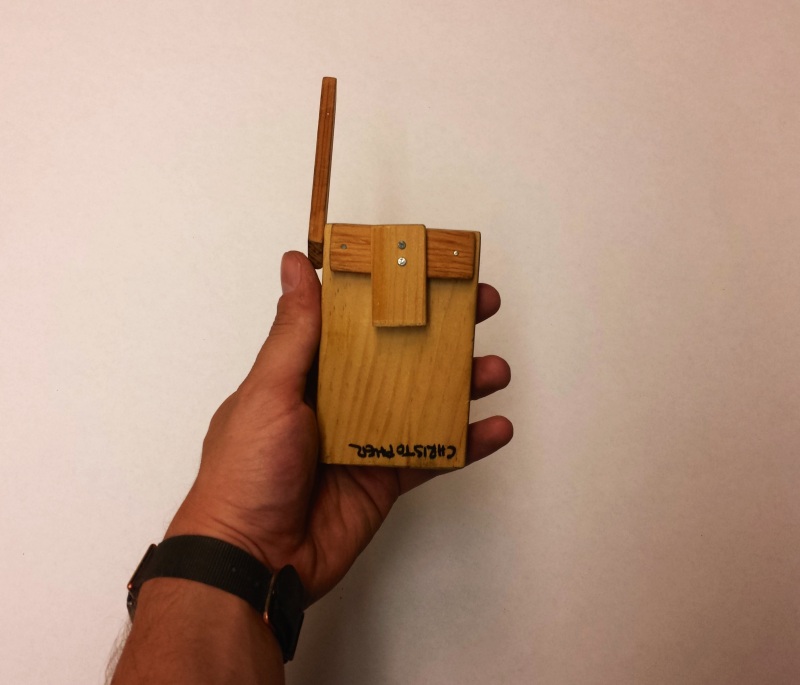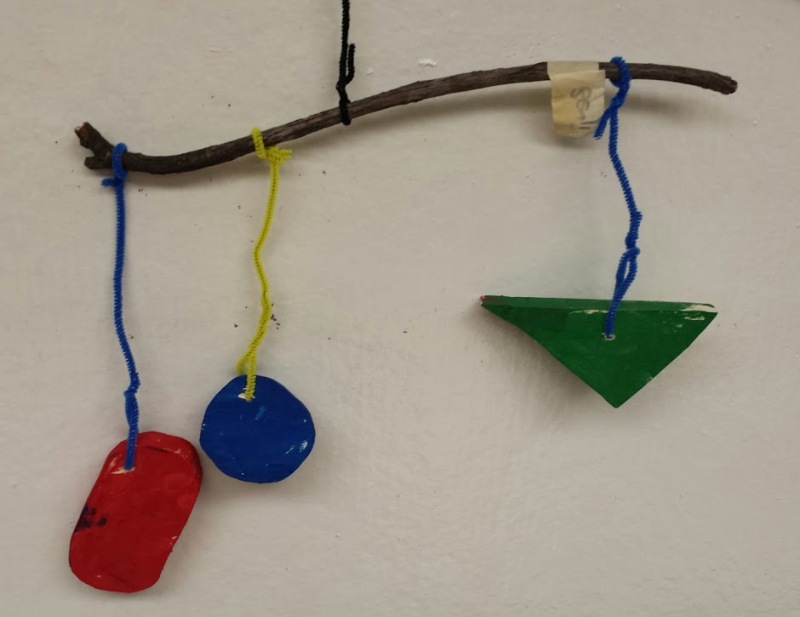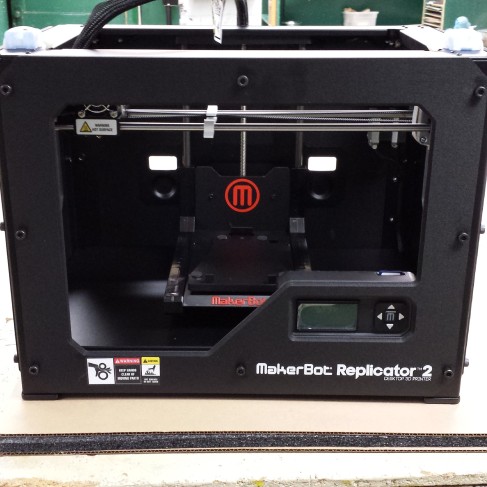Coming back to school from break to find a flooded woodshop was not the best way to start 2015. With some heavy rains the night before, the shop had about 2 inches of water. I was left without my tools and materials but what I still had was a full day of classes scheduled. Time to be flexible.
Walkie Talkie pt. 2
We have the main body part of the Walkie Talkie complete, now it’s time to move on to the details… All good Walkie Talkies need an antenna, and the BEST have belt clips. Ours have both, so here’s how you make them.
Kindergarten Walkie Talkies
Ah yes, the iconic Far Brook School Walkie Talkie Project™. Every Kindergartener at FBS works on this project as an introduction (or reintroduction) to the woodshop. The project is designed to expose the students to all of the tools they will be using in Kindergarten. They make great toys for dramatic play on the playground.
Getting Started with Kinetic Sculpture
New year, new projects. The students have returned and it is time to get building. Sixth Grade starts off by building automata, or kinetic sculptures. In the past, students have jumped in feet first without much guidance. After trying that for two years, I decided it might be time to add (just a little) more structure to their process. Using the PDF found here (via Exploratorium), the students began with a guided rough draft, pointing out areas they may have trouble with their final draft.
These drafts help the students imagine the possibilities for their final draft. I’m looking forward to seeing what our students come up with as well as watching them solving the challenges that will come up!
Exploring Calder
We are about two months into school and many projects are beginning to take form. The first grade class has been exploring the forces of gravity and how it affects their projects. Using Alexander Calder’s mobiles as inspiration, our students have been creating and balancing mobiles of their own.

Calder
The first grade chose their shapes and cut them out of wood. Once they finished cutting, rasping, sanding and painting, it was time to try and balance them using branches found around the campus. We used pipe cleaners to hang our parts together. I find that pipe cleaners work well for the young students because it is easily bent into shape and can be used to bind things together. It also works those pincher muscles that are so important for writing!
The students had a great time creating their mobiles. There was a great deal of trial and error in getting them to balance. Many students went through several iterations and much experimentation before settling on their final placements. We are all looking forward to bringing them home and sharing our work with our families!
Back to school, back to school…
With school around the corner (open house tomorrow!), I find myself extremely excited about the new year. Each year is a new beginning for the Shop program and allows for expansion on the previous years. There are some interesting projects in store for the students this year and I am looking forward to sharing them with the Far Brook community!
The Makerbot has Arrived!
Earlier this week, we received a large package at Far Brook School. After (carefully!) opening the many layers of protective foam and cardboard, our new Makerbot Replicator 2 was released from its packaging! After some small calibrations and set-up the 3D printer was ready to roll.
You may have heard a lot about 3D printing lately. A 3D printer allows makers to create an object that they have designed digitally using software like Tinkercad or SketchUp. Once the object is designed and ready to be printed, the file is sent off to the 3D printer. The machine will lay down a thin layer of plastic and will build on top of each layer, building the object 0.1 mm high at a time.
This 3D printer opens up a world of opportunities for our students at Far Brook. They can now create custom parts that would be difficult to make out of wood. I am looking forward to posting photos of their projects!
Four traits necessary for design thinking
via Don Buckley at NYSAIS STEAMCamp:
1: Observe. Watch for surprising or interesting stimuli.
- Take notes, watch how people interact with physical objects (iPhone, laptop or books)
2: Question. Ask questions that impose / remove constraints.
- How would you drive a car if steering wheels didn’t exist? How could you build your project to keep it under two pounds?
3: Network. Interact with people from various backgrounds.
- Try eating lunch with a different classmate. Learning about others leads to a greater empathy; a key component to design thinking.
4: Experiment. Complicate your life by trying new things
- Try taking a new route home, or try cooking a new meal. Adding variety to your life can change your view and open your eyes to new inspirations





